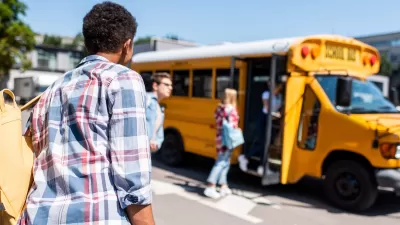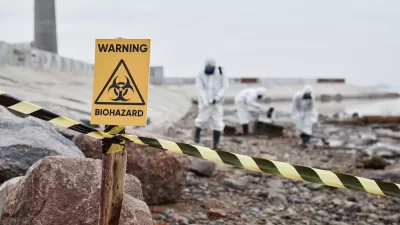As a childhood Whitney Houston fan and former owner of her Greatest Hits cassette tape, her death revived memories of a 13 year old summer camper standing atop a twin bed belting out The Greatest Love of All into a hairbrush microphone. I never really paid much attention to the lyrics until news reports of her death relentlessly played the song--“I believe the children are our future. Teach them well and let them lead the way.” The 13-year old in me always liked that Whitney was singing about my generation, but beyond that, I didn’t quite understand the message. And it wasn’t until last month when I listened to the lyrics and I get it now. It is our responsibility to prepare our children for their roles in building and shaping our world, our cities, our neighborhoods.
As a childhood Whitney Houston fan and former owner of her Greatest Hits cassette tape, her death revived memories of a 13 year old summer camper standing atop a twin bed belting out The Greatest Love of All into a hairbrush microphone. I never really paid much attention to the lyrics until news reports of her death relentlessly played the song--"I believe the children are our future. Teach them well and let them lead the way." The 13-year old in me always liked that Whitney was singing about my generation, but beyond that, I didn't quite understand the message. And it wasn't until last month when I listened to the lyrics and I get it now. It is our responsibility to prepare our children for their roles in building and shaping our world, our cities, our neighborhoods. But are we doing a good job of this?
Sure our children are learning the basics-math, science, reading, writing, language. I could go on for pages about the plight of inner city schools vs. suburban schools, the lack of funding and equal access to public education, but I'm thinking bigger picture. Can our schools help our children become better people, better members of our communities, who make business decisions based on how they might impact the city and the neighborhood? In a time when people are searching for a connection to their communities, I propose reevaluating our approach to primary and secondary school teaching and using city planning and our cities as a template for learning.
Many organizations offer short workshops similar to planning charettes, but adapted for children. APA has a Youth in Planning page with teacher resources to teach children about the profession. Their Kids' Planning Toolbox and ResourcesZine provide a database of articles and tools for teaching students about planning. There are brief lesson plans for introducing planning exercises to kids like "Be a Water Treatment Officer" and "Great Place, Lousy Place". And one of the more compelling examples is the Urban Land Institute's Urban Plan for highschool and college students in which teams respond to a "request for proposals" to redevelop a blighted site in a hypothetical community taking on each of the five roles: finance director, marketing director, city liaison, neighborhood liaison, or site planner. This is a course designed primarily for economics and some government classes. But thee program has some real legs with over 20,000 graduates since 2004. All are a great introduction to the planning field. There are also many great examples of youth engagement in master planning. But there are scarce examples of planning as a model for an interdisciplinary approach to primary school curriculum.
Using a planning based approach to math, science, reading, and writing, art, and music, and language challenges children to think about their environment-their surroundings and how their core curriculum relates to their daily lives. Imagine introducing primary school students to aerial photography of their neighborhoods and the reaction it might elicit to understand the spatial relationship of their home to their park or school, distance and time depending on mode of transit, land uses and what those uses look like at street level compared to plan view. Imagine introducing historic maps of the same neighborhood. How would this discussion affect their values as adults? How would it impact how our cities grow?
There are so many rich and multi-faceted lessons in City planning for our children, but there are also tangential benefits to our cities' futures. A child who grows up understanding the various inputs which shape our environment, has a greater likelihood of growing up to be a responsible leader who makes decisions with our cities in mind. I think Whitney got it right with her poignant song. If we teach our children well, they will become better leaders. Let's use planning to a better job of teaching our kids.

Alabama: Trump Terminates Settlements for Black Communities Harmed By Raw Sewage
Trump deemed the landmark civil rights agreement “illegal DEI and environmental justice policy.”

Study: Maui’s Plan to Convert Vacation Rentals to Long-Term Housing Could Cause Nearly $1 Billion Economic Loss
The plan would reduce visitor accommodation by 25% resulting in 1,900 jobs lost.

Planetizen Federal Action Tracker
A weekly monitor of how Trump’s orders and actions are impacting planners and planning in America.

Waymo Gets Permission to Map SF’s Market Street
If allowed to operate on the traffic-restricted street, Waymo’s autonomous taxis would have a leg up over ride-hailing competitors — and counter the city’s efforts to grow bike and pedestrian on the thoroughfare.

Parklet Symposium Highlights the Success of Shared Spaces
Parklets got a boost during the Covid-19 pandemic, when the concept was translated to outdoor dining programs that offered restaurants a lifeline during the shutdown.

Federal Homelessness Agency Places Entire Staff on Leave
The U.S. Interagency Council on Homelessness is the only federal agency dedicated to preventing and ending homelessness.
Urban Design for Planners 1: Software Tools
This six-course series explores essential urban design concepts using open source software and equips planners with the tools they need to participate fully in the urban design process.
Planning for Universal Design
Learn the tools for implementing Universal Design in planning regulations.
Caltrans
Smith Gee Studio
Institute for Housing and Urban Development Studies (IHS)
City of Grandview
Harvard GSD Executive Education
Toledo-Lucas County Plan Commissions
Salt Lake City
NYU Wagner Graduate School of Public Service





























